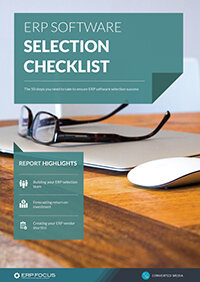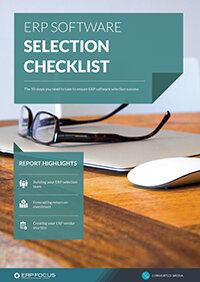The invitation to tender: final ERP selection and contract award
We've previously looked at writing a requirements specification (or ITT), reviewing and assessing responses to it, and making the most of presentations and demonstrations by prospective suppliers. This article looks at what remains to be done before (hopefully) placing a contract.
Having had presentations, and having had time individually to consider them, the selection team should now meet as a group to compare notes. Taking one system at a time, each team member should evaluate fit and functionality for his or her area of responsibility. Of particular importance are the items that were flagged amber or red on the ITT response, and team members should advise if these were successfully addressed during the presentation or whether they remain concerns.
The first pass should just sort the wheat from the chaff and find out if there is a unanimous favorite or any contenders that everyone thinks can be eliminated. If there is no unanimous favorite, the team should discuss the perceived problems with the systems that remain under consideration and, in doing so, should feel free to challenge each other in order to verify that 'red' items truly are red and cannot be worked around; remember also that some bespoke modifications may be acceptable.
If the group cannot agree on a particular choice, they must report to the project sponsor that they have reached an impasse. The project sponsor can challenge their decisions but must not force or impose a decision because if just one of the team goes back to her or his department with the message, “I felt it was the wrong system for us but I was over-ruled”, then that department can be expected to be less than enthusiastic and a sub-optimal implementation is inevitable.
It is unlikely that going back to the marketplace and selecting another batch of systems for evaluation would be a solution unless the company decides to increase the budget sufficiently to allow systems from a higher tier to be considered. Typically, companies spend the equivalent of between three and five percent of their annual turnover on a new ERP system so, if they are at the lower end of that range, increasing it may be an option.
If not, there are two options. A small company may decide that some departments can run on manual systems, such as spreadsheets, whilst moving, for example, to just a new accounting system and not full ERP. The second option for all would be to consider a 'best of breed' solution, in which each department selects its own specialist system, and then to write routines to transfer data between those various systems as required. This is generally a more expensive solution but is better than failure.
However, if the team can agree on a choice, it is time to obtain detailed costings from the preferred supplier for software, consultancy, training, and any necessary modifications or add-ons; remembering that some vendors and system integrators will be tempted to under-quote in order to win the business (a thought that will be returned to in a moment). The company also needs written confirmation of any claims and promises that the supplier may have made verbally; along with commitments to project timescales.
The next step is to obtain references and to follow these up diligently. As with the ITT, questions asked during reference site visits should not be questions that can be answered 'yes' or 'no' but should be questions such as, “What problems did you have during the project and how were they overcome?”.
Finally, any contract offered by the supplier must be reviewed by a specialist ERP attorney. Large companies may have their own legal departments but if they don't have experience specifically of ERP contracts, important things can slip through the cracks. Take, for example, the earlier point about suppliers deliberately under-quoting (by underestimating training and consultancy days, or the cost of modifications): when the contract is signed and it is too late to go back, who is going to pay these extra costs?
Hopefully, the advice offered in this series of blogs will help companies to make good decisions, and the advice offered on other blogs on this website will help ensure that those decisions lead to successful implementations.
Free white paper

60-Step ERP Selection Checklist
Get the comprehensive checklist for your ERP selection project

Featured white papers
-

ERP Software Pricing Guide
Get the latest pricing information on over 80 popular ERP systems, and learn how to budget for your ERP project in our free guide
Download -

60-Step ERP Selection Checklist
Get the comprehensive checklist for your ERP selection project
Download -

ERP Demo Guide & Scorecard
Master your ERP demo with 5 easy steps using our free guide (includes demo scorecard)
Download
Related articles
-

The best ERP systems for process manufacturing
Consider these ERP systems when selecting your next process manufacturing ERP
-

Secret KPI: Why Your ERP Implementation Team Matters More Than Software
Learn how Godlan ensures successful ERP implementation for manufacturers with proven strategies &...
-

A complete ERP RFP template & guide (includes free template)
All you need to know construct a foolproof ERP RFP, including a customizable template

